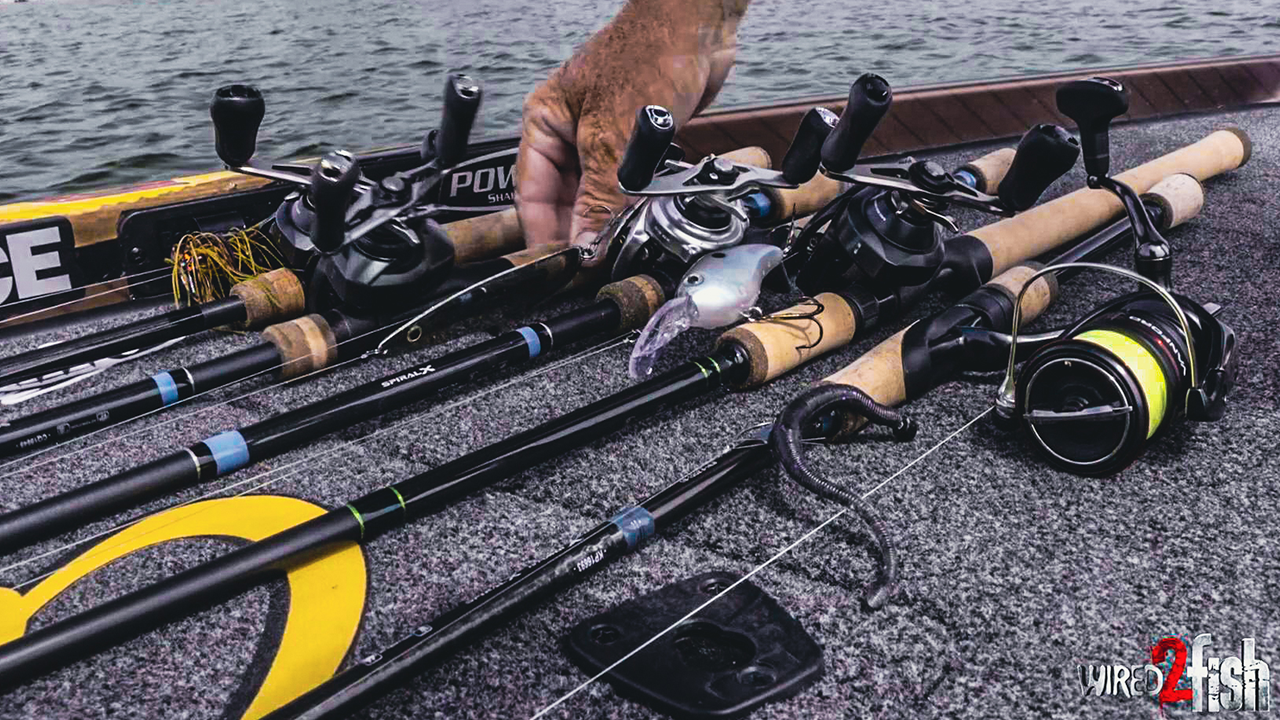It’s relatively easy to fish down a shoreline and spot good-looking spots, but finding productive offshore areas requires some searching with electronics and a smart lures strategy. Major League Fishing pro, David Walker, explains how he locates productive offshore areas using a combination of sonar technologies and a handful of lures that span aggressive to finesse.
NEKO RIG SETUP
- WORM – Z-Man SMH WormZ, color – Green Pumpkin
- NEKO WEIGHT – Z-Man Neko ShroomZ
- HOOK – Gamakatsu G-Finesse Weedless Stinger Neko Hook
- LINE (mainline) – Sunline Xplasma Asegai Braided Line, 16-pound
- LINE (leader) – Sunline New Shooter Fluorocarbon, 7-pound
- REEL – Shimano Vanford C300XG Spinning Reel
- ROD – Shimano G Loomis Conquest, 7′ 6″ Medium-Light Spinning Rod
TACKLE USED
- CRANKBAIT – Strike King Silent Series 6XD
- FOOTBALL JIG – Z-Man David Walker’s CrosseyeZ Football Jig
Walker recommends spending a good amount of time at the steering wheel looking for sweet spots such as where deep brush intersects creek channels. He drops waypoints on his side and down scan, then takes to the bow where forward-facing sonar further defines the structure and cover and determines if bass are present.
Walker prefers starting his fishing with a fast-moving reaction bait like a crankbait. A crankbait scours a specific depth with utmost efficiency. He then works in spoons to see if the vertical up and down motion is a better trigger than a fast and horizontal crankbait. In general, he orders his bait selection from fastest to slowest.
Switching gears, a Texas-rigged worm is always a must-try when bass are hunkered down in the brush or grass. Walker then pivots to a big-profiled football jig and drags it across the bottom. When everything else fails to produce bites, a weedless Neko rig setup starts generating bites and reveals a viable pattern.












